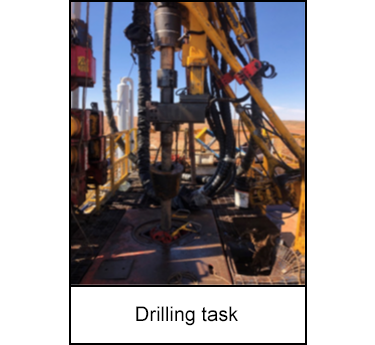-
What happened?
Whilst drilling through a cement plug set inside casing a pressure source was intersected sufficient to eject the drilling assembly from the wellbore.
This sent the top-drive to the crown followed by an uncontrolled descent to the rig floor.
The rig was immediately evacuated and operations halted until well control was re-established.
No injuries were sustained by any personnel.

-
Why did it happen?
Trapped pressure either from pockets of hot fluid in the annulus or trapped due to thermal heating between abandonment cement plugs postplacement.
The risk of pressure from the granite source being seen on the inside of the casing was assessed prior to the job (and is still considered) highly unlikely due to the well construction and multiple fully verified internal barriers.

-
What did they learn?
No potential pressure scenarios or leak paths should be ruled out especially where high pressure and temperatures are involved. High pressure / low permeability sources can add complexity.
The potential for significant pressures to be trapped in annuli due to fluid remnants from poor cement jobs that could find a pathway into the wellbore should be considered as part of the risk assessment.
Verification of permanent barriers is critical and if any existing barriers must absolutely be removed then consider the use of alternate technologies such as managed pressure control or snubbing.

-
Ask yourself or your crew
Is there potential for trapped thermal pressure build-up behind a well barrier element?
Have all potential sources of pressure been included in your risk assessment?
Are there other options than drilling through a well barrier to achieve the program requirements?

Add to homescreen
Content name
Select existing category:
Content name
New collection
Edit collection
What happened?
Whilst drilling through a cement plug set inside casing a pressure source was intersected sufficient to eject the drilling assembly from the wellbore.
This sent the top-drive to the crown followed by an uncontrolled descent to the rig floor.
The rig was immediately evacuated and operations halted until well control was re-established.
No injuries were sustained by any personnel.

Why did it happen?
Trapped pressure either from pockets of hot fluid in the annulus or trapped due to thermal heating between abandonment cement plugs postplacement.
The risk of pressure from the granite source being seen on the inside of the casing was assessed prior to the job (and is still considered) highly unlikely due to the well construction and multiple fully verified internal barriers.
What did they learn?
No potential pressure scenarios or leak paths should be ruled out especially where high pressure and temperatures are involved. High pressure / low permeability sources can add complexity.
The potential for significant pressures to be trapped in annuli due to fluid remnants from poor cement jobs that could find a pathway into the wellbore should be considered as part of the risk assessment.
Verification of permanent barriers is critical and if any existing barriers must absolutely be removed then consider the use of alternate technologies such as managed pressure control or snubbing.
Ask yourself or your crew
Is there potential for trapped thermal pressure build-up behind a well barrier element?
Have all potential sources of pressure been included in your risk assessment?
Are there other options than drilling through a well barrier to achieve the program requirements?
During drilling operations, a pressure source was intersected, causing the drilling assembly to be ejected from the wellbore and resulting in an uncontrolled descent of the top-drive to the rig floor. The rig was evacuated, and operations were halted until well control was re-established, with no injuries reported.
Original material courtesy of Safer Together (Australia)
To access the PDF and PowerPoint versions, please visit https://www.safertogether.com.au/resources/sharing-library/drilling-completing-a-well-loss-of-well-control-learning-event-bulletin













